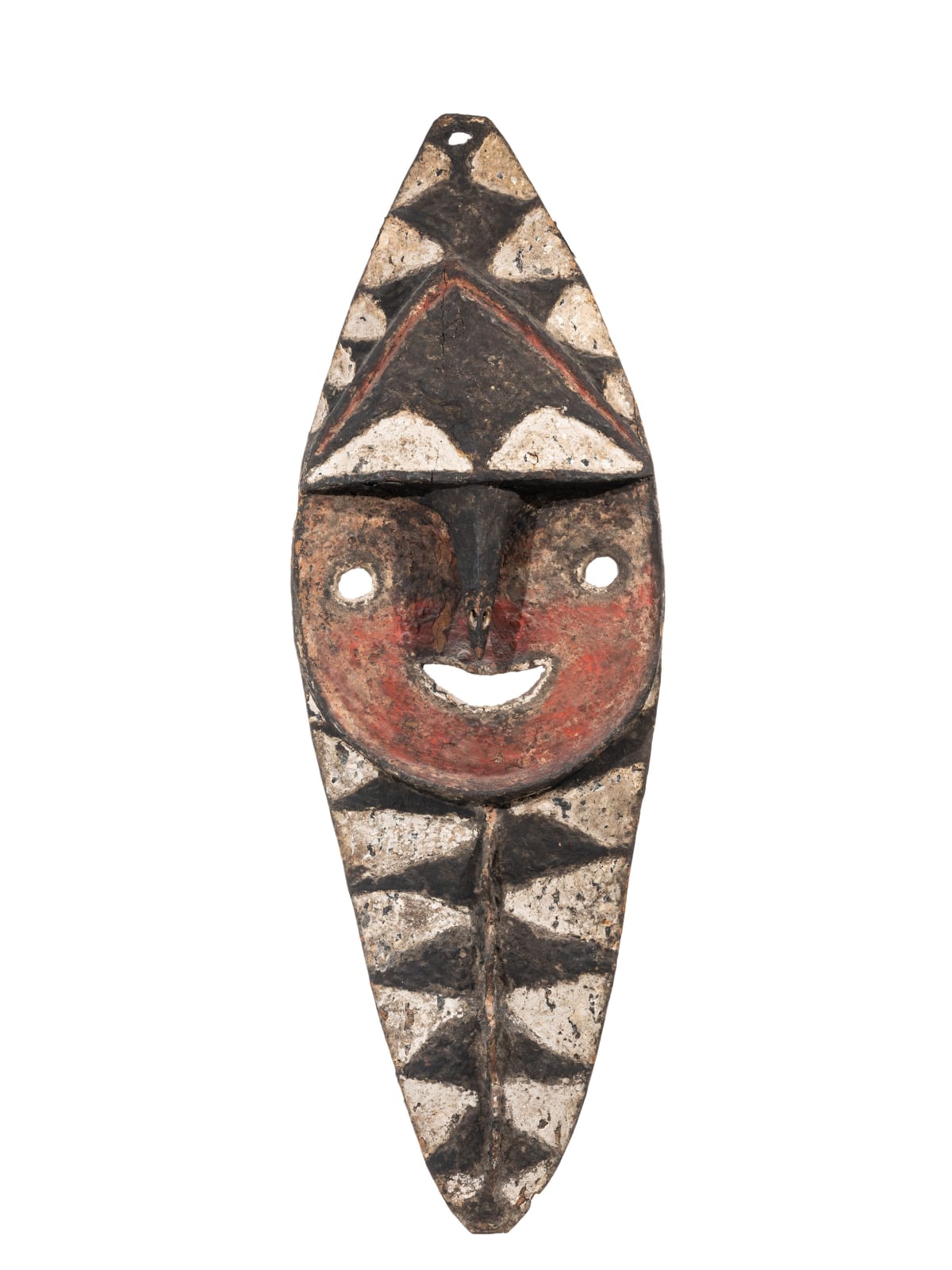Anonymous artist
Kwoma Minja figure
Wood
Origin: Papua New Guinea
Origin: Papua New Guinea
height 118 cm
height 46 1/2 in
height 46 1/2 in
Copyright Duende Art Projects
Photo: Valentin Clavairolles
Further images
Success in gardening, the protection of crops from thieves, the general fertility of plants, trees, and women, are concerns that many New Guinea societies addressed through communal rituals, often involving...
Success in gardening, the protection of crops from thieves, the general fertility of plants, trees, and women, are concerns that many New Guinea societies addressed through communal rituals, often involving the use of carved objects. On the northern bank of the western edge of the Middle Sepik lie the Washkuk hills, home to the Kwoma people. The Kwoma were primarily yam cultivators and celebrated the yam harvest with splendid pomp and ceremony. The three main consecutive sacred ceremonies celebrating the growth and harvest of yams were called yena, minja, and nogwi, and specific works of art were carved for each occasion. The present cult object was displayed during the second cycle of ceremonies, minja-ma. Although it might look like a large mask, such a carving was not worn but displayed in pairs during yam harvest rituals. The triangular designs below the face symbolize banana leaves, and the wavelike form carved in relief running along the axis a snake. These sculptures represent water spirits that could sometimes be seen by the people, swimming just below the surface. These water spirits were believed to promote the growth of yams. During the minja-ma ritual, in the early morning, a pole was set up in the ceremonial house, and at its base was laid a basket containing yams. A pair of carvings, of which this was one, was placed against the pole, back-to-back, and each was decorated with the feathers of birds of paradise and chickens. Men then participated in cycles of singing, dancing, and feasting throughout the day and night until dawn the next day. When the ceremonies ended, the carvings were taken down, wrapped up, laid on the slit gongs that had provided the music for the dances, and removed to shelters. Only then could yams be distributed throughout the village. With each new ceremony, the sculpture would be repainted with natural pigments. This object’s deep patina hence is a testament of its long ritual usage. The Kwoma were known as masterly woodcarvers, and their art is always very colorful – two trademark elements that come to fruit in this splendid work of art.
Provenance
Loed van Bussel, Amsterdam, 1984
Cees Van Strien Collection
By descent through family, 2022
let's keep in touch
Join our community & never miss out on a DUENDE moment from now on
* denotes required fields
We will process the personal data you have supplied to communicate with you in accordance with our Privacy Policy. You can unsubscribe or change your preferences at any time by clicking the link in our emails.













